-
HBI Seminars
HBI Seminar Series
HBI was launched in Nov 2019. As we entered 2020 and found ourselves WFH, we launched the HBI Seminar Series in a virtual format. Every fortnight, 2 speakers spoke for 20min each. Our original aim was to learn more about the research going on within HBI to increase collaboration. However, it quickly became apparent that our work is influenced by multiple local, national and international partners. Thus the series quickly expanded. The seminar series continues with a face to face and virtual option.
Please join us!
-
22 November 2021 - Professor Adrian Esterman
'COVID-19 – How will opening the borders affect the State and UniSA?'
22
NOV 21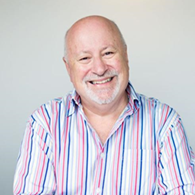 Adrian is Professor of Biostatistics and Epidemiology and is often seen in the media talking about COVID-19. In this presentation, Adrian will look at the current state of play in NSW and Victoria, the likely impact on South Australia of opening the borders, and how to keep UniSA safe.
Adrian is Professor of Biostatistics and Epidemiology and is often seen in the media talking about COVID-19. In this presentation, Adrian will look at the current state of play in NSW and Victoria, the likely impact on South Australia of opening the borders, and how to keep UniSA safe.Date: Monday 22 November, 11:30-12:30
Location: Bradley Building, HB8-18 and Zoom -
25 October 2021 - Professor Clive Prestidge & Associate Professor Anton Blencowe
'Nanostructure to Facilitate Next Generation Medicines'
25
OCT 21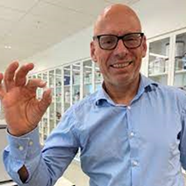 Clive is co-director of the University’s new “Centre for Pharmaceutical Innovation” and Head of the “Nanostructure and Drug Delivery” research group. In this talk he will report recent research case studies associated with (i) improving oral delivery of challenging drugs through hybrid nanostructures, (ii) nanocarriers for antimicrobial delivery and improved infection control and (iii) nanomedicines for improved chemotherapy.
Clive is co-director of the University’s new “Centre for Pharmaceutical Innovation” and Head of the “Nanostructure and Drug Delivery” research group. In this talk he will report recent research case studies associated with (i) improving oral delivery of challenging drugs through hybrid nanostructures, (ii) nanocarriers for antimicrobial delivery and improved infection control and (iii) nanomedicines for improved chemotherapy.'The Light of Truth: Elucidating the Structures and Behaviour of Drug Delivery Platforms with Synchrotron Radiation'
 Anton is the Leader of the Applied Chemistry and Translational Biomaterials Group. His research focuses on the development of innovative chemistries, delivery systems and biotechnologies to address challenges in the biomedical, mining, and environmental sectors.
Anton is the Leader of the Applied Chemistry and Translational Biomaterials Group. His research focuses on the development of innovative chemistries, delivery systems and biotechnologies to address challenges in the biomedical, mining, and environmental sectors.Nanoscale delivery platforms and responsive polymers have promise for the delivery of therapeutics and cells, and their structure strongly influences their behaviour (e.g., cellular uptake). Observing the precise structure of these systems in solution is particularly challenging. In this presentation, Anton will discuss the application of Synchrotron X-ray scattering techniques for the elucidation of micelle morphology and for studying the behaviour of polymer systems in response to stimuli.
Date: Monday 25 October, 11:30-12:30
Location: Bradley Building, HB8-18 and Zoom -
13 September 2021 - Dr Michaela Johnson
'Exploring olfactory dysfunction and lysosomal mutations in the prodromal α-synuclein preformed fibrils mouse model.'
13
SEPT 21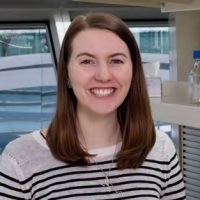 Dr Michaela Johnson completed a PhD in Medical Science at the University of South Australia in 2018, with her research focused on establishing an early (prodromal) model of Parkinson’s disease, using the neurotoxin rotenone. Upon conferral of her PhD, Michaela was appointed to a highly competitive postdoctoral fellow position working with internationally renowned Parkinson’s disease expert Patrik Brundin, and his laboratory team at the Van Andel Institute in Michigan, USA. While working at the Van Andel Institute, Michaela’s research focused on using the α-synuclein preformed fibrils model of Parkinson’s Disease to investigate how different environmental triggers and genetic mutations affect the cell-to-cell transfer of pathology.
Dr Michaela Johnson completed a PhD in Medical Science at the University of South Australia in 2018, with her research focused on establishing an early (prodromal) model of Parkinson’s disease, using the neurotoxin rotenone. Upon conferral of her PhD, Michaela was appointed to a highly competitive postdoctoral fellow position working with internationally renowned Parkinson’s disease expert Patrik Brundin, and his laboratory team at the Van Andel Institute in Michigan, USA. While working at the Van Andel Institute, Michaela’s research focused on using the α-synuclein preformed fibrils model of Parkinson’s Disease to investigate how different environmental triggers and genetic mutations affect the cell-to-cell transfer of pathology.Date: Monday 13 September, 11:30-12:30
Location: Bradley Building, HB8-18 and ZoomZoom link
Password: 745694 -
30 August 2021 - Dr Joanne Davidson & A/Professor Kathy Gatford
'Should we treat mild perinatal hypoxic-ischemic brain injury?'
30
AUG 21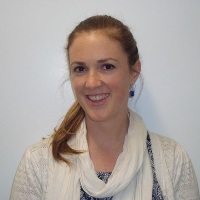
Dr Davidson is a senior research fellow in the fetal physiology and neuroscience group at The University of Auckland, New Zealand. The overarching goal of her research is to understand the mechanisms of perinatal brain injury with a focus on the development of new treatment strategies. Her research interests include connexin hemichannel biology, inflammation, optimisation of therapeutic hypothermia, the use of recombinant erythropoietin and human amnion epithelial cells as neuroprotective treatments and the development of treatment strategies for mild hypoxic-ischemic encephalopathy.
'Understanding and alleviating the impacts of maternal asthma'
 Kathy is a group leader in the Robinson Research Institute, and a teaching-research academic in the newly formed School of Biomedicine, at the University of Adelaide. She has broad research interests in normal and complicated pregnancy, how these impact the health of progeny, and interventions to improve maternal and progeny health. Asthma affects the pregnancies of ~40000 Australian women each year, and we are using a variety of experimental approaches to not only understand how asthma affects the mother and her infant, but also to answer the question of whether pregnancy also affects asthma progression.
Kathy is a group leader in the Robinson Research Institute, and a teaching-research academic in the newly formed School of Biomedicine, at the University of Adelaide. She has broad research interests in normal and complicated pregnancy, how these impact the health of progeny, and interventions to improve maternal and progeny health. Asthma affects the pregnancies of ~40000 Australian women each year, and we are using a variety of experimental approaches to not only understand how asthma affects the mother and her infant, but also to answer the question of whether pregnancy also affects asthma progression.Date: Monday 30 August, 11:30-12:30
Location: Bradley Building, HB8-18 and Zoom -
2 August 2021 - Dr Nadia Corsini
'Consumer engagement in research - where to start'
1
AUG 21 Dr Nadia Corsini is a Senior Research Fellow at the Rosemary Bryant AO Research Centre.
Dr Nadia Corsini is a Senior Research Fellow at the Rosemary Bryant AO Research Centre.Nadia is an experienced behavioural scientist who has worked extensively with industry, government and nongovernment organisations on research and evaluation projects focused on promoting health and wellbeing and supporting people recovering from illness. Nadia’s primary research interests centre around improving quality of life for people affected by cancer. She is passionate about consumer engagement and has been actively engaged with the Community and Consumer Action Group at Health Translation SA.
In this presentation you will learn about how to get started with engaging consumers in your research, how to do this well, and what support is available.
Date: Monday 1 August, 1:00-2:00pm
Location: Zoom only -
19 July 2021 - Dr Claire Jones
'Biomechanics in neurotrauma research'
19
JUL 21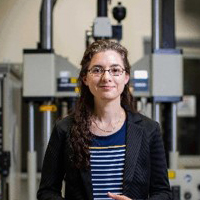 Dr Claire Jones is a mechanical engineer who studies the biomechanics of the musculoskeletal and nervous systems in normal, diseased and injured states. A better understanding of such biomechanics contributes to improved disease and injury prevention strategies, diagnostic tests and conservative and surgical management. One focus of Claire’s research is the trauma that results from sudden injury to the head or spine, such as concussions, traumatic brain injuries (TBI), skull fractures, spinal column fractures, and spinal cord injuries (SCI). In this presentation, she will discuss pre-clinical and cadaver models that she develops to study injury mechanisms, outcomes, and interventions.
Dr Claire Jones is a mechanical engineer who studies the biomechanics of the musculoskeletal and nervous systems in normal, diseased and injured states. A better understanding of such biomechanics contributes to improved disease and injury prevention strategies, diagnostic tests and conservative and surgical management. One focus of Claire’s research is the trauma that results from sudden injury to the head or spine, such as concussions, traumatic brain injuries (TBI), skull fractures, spinal column fractures, and spinal cord injuries (SCI). In this presentation, she will discuss pre-clinical and cadaver models that she develops to study injury mechanisms, outcomes, and interventions.Claire is a Senior Research Fellow, jointly appointed in the Adelaide Medical School and School of Mechanical Engineering, at The University of Adelaide. She leads the Adelaide Spinal Research Group (ASRG), within the Centre for Orthopaedics & Trauma Research. Her team currently comprises six PhD students, a postdoctoral researcher and a research assistant, with backgrounds in medical sciences and engineering. ASRG research is currently supported by the Australian Research Council (Discovery Project), Perpetual Impact Philanthropy (Kevin Darrell Clarke Endowment), Neurosurgical Research Foundation, The Hospital Research Foundation, and North American Spine Society.
Date: Monday 19 July, 11:30-12:30
Location: Bradley Building, HB8-18 and Zoom -
21 June 2021 - Linda Rozenberga & Jie (Juliet) Yan
'Metal Organic Framework based fibre-optic sensors.'
21
JUN 21
In the mineral leaching process, there are several factors that have a substantial effect on the reaction kinetics and yield, amongst them the reaction participating ion concentration. Currently, there are a limited number of analytical techniques that allow fast and accurate Fe3+ ion concentration measurements. The aim of this project is to develop a sensitive, selective and fast responding optical fibre based ferric ion sensor using a metal organic framework coating as the spectroscopic probe.
'Development of new injectable biomaterials for the delivery of cells and therapeutic agents'
 Juliet is a PhD candidate at UniSA Clinical and Health Sciences. Her research focuses on the development of injectable biomaterials for the delivery of cells and therapeutic agents, which aims to identify new polymeric biomaterials to provide novel systems for tissue engineering and controlled delivery of adoptive cell therapies.
Juliet is a PhD candidate at UniSA Clinical and Health Sciences. Her research focuses on the development of injectable biomaterials for the delivery of cells and therapeutic agents, which aims to identify new polymeric biomaterials to provide novel systems for tissue engineering and controlled delivery of adoptive cell therapies.Date: Monday 21 June, 11:30-12:30
Location: Bradley Building, HB8-18 and Zoom -
7 June 2021 - Dr Lin Kooi Ong
'Secondary neurodegeneration after stroke: Neuropathological changes and potential therapeutic targets.'
7
JUNE 21 Lin Ong is a teaching & research academic at the School of Pharmacy, Monash University Malaysia. He is an emerging researcher in translational stroke research. His research directly addresses two of the most challenging problems in stroke and cerebrovascular conditions:
Lin Ong is a teaching & research academic at the School of Pharmacy, Monash University Malaysia. He is an emerging researcher in translational stroke research. His research directly addresses two of the most challenging problems in stroke and cerebrovascular conditions: - how to prevent widespread neuronal cell death after brain injury/ischemia, and
- how to promote brain recovery to yield the greatest possible functional outcome.
His work to date has provided direct evidence that stroke initiates delayed tissue loss in remote brain regions that are functionally connected to the primary infarction site. He further demonstrated the association between stroke induced secondary neurodegeneration and cognitive impairment. Critically, he has shown the modulation of brain repair mechanisms using pharmacological and non-pharmacological approaches can promote stroke recovery.
Date: Monday 7 June, 11:30-12:30
Location: Bradley Building, HB8-18 and Zoom -
24 May 2021 - A/Prof Maurizio Costabile & A/Prof Sally Plush
'Animal Ethics.'
24
MAY 21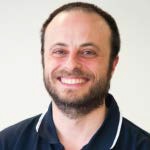
Maurizio is a teaching focussed academic in Clinical and Health Sciences. He Chairs the Animal Ethics Committee and is currently Dean of Research at Education Futures. His educational research focusses on innovative approaches to enhance student learning. He has successfully applied interactive simulations to enhance student learning in lectures and practicals.
Maurizio is also a senior member of the Molecular Signalling laboratory, which studies the enzyme, sphingosine kinase.
In this seminar, Maurizio will provide an overview of how the AEC reviews an application and, he will highlight common areas of an application which can delay and/or lead to a rejection.
'Research Integrity'
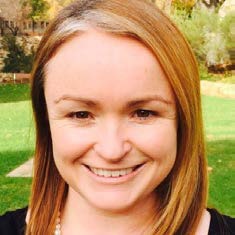 Sally is a research academic at UniSA Clinical and Health Sciences. In addition to her research and teaching roles, she is the Academic Integrity Advisor for City East and the Bradley Building. The Australian community expects research to be conducted responsibly, ethically and with integrity and as researchers it is important we know what this looks like and we promote the responsible conduct of research.
Sally is a research academic at UniSA Clinical and Health Sciences. In addition to her research and teaching roles, she is the Academic Integrity Advisor for City East and the Bradley Building. The Australian community expects research to be conducted responsibly, ethically and with integrity and as researchers it is important we know what this looks like and we promote the responsible conduct of research.This talk will focus on areas of research integrity and some common ‘mistakes’ that can easily occur.
Date: Monday 24 May, 11:30-12:30
Location: Bradley Building, HB8-18 and Zoom -
10 May 2021 - Professor Alan Boddy
'Project-based Higher Degree by Research and Measures of Success.'
10
MAY 21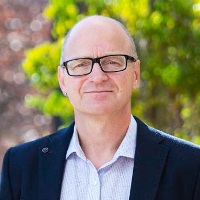
Alan is Dean of Research and Institute Director, Clinical and Health Sciences. He will be talking about the new Project-based Higher Degree by Research process and the Research and Enterprise Measures of Success.
Date: Monday 10 May, 11:30-12:30
Location: Bradley Building, HB8-18 and Zoom -
29 March 2021 - Dr Emily Meyer
'Corticosteroid-binding globulin (CBG): role in cortisol transport and inflammation.'
29
MAR 21
Dr Emily Meyer is an Endocrinologist at the Royal Adelaide and Queen Elizabeth Hospitals. She is completing a PhD in corticosteroid-binding globulin (CBG) in septic shock and was successful in being awarded the AR Clarkson Scholarship, Royal Adelaide Hospital Research Fund.
CBG is the key transport protein for cortisol and other steroid hormones.It is a non-inhibitory serine protease inhibitor, capable of conformational change from a high cortisol-binding affinity form to a low affinity form upon cleavage of its reactive centre loop by various proteases, such as neutrophil elastase.CBG is naturally designed to optimise the human body’s natural response to inflammation by facilitating maximal cortisol delivery via four key mechanisms: pyrexia, reduced synthesis, neutrophil elastase cleavage and tissue acidosis. Our human studies demonstrate that a lack of targeted delivery of natural cortisol and/or administered hydrocortisone to damaged tissue is due to deficient serum concentrations of CBG, perpetuating organ failure and death in sepsis.
Pregnancy and the estrogen-based combined oral contraceptive pill increase CBG concentrations threefold through increased hepatic synthesis, placental derived CBG and pregnancy induced changes in glycosylation patterns.Speculatively, increased circulating CBG concentrations in pregnancy may provide an increased reservoir of CBG-bound cortisol to prepare for the risk of puerperal infection or allow for cortisol binding in the face of competition from increased circulating progesterone concentrations.Date: Monday 29 March, 11:30-12:30
Location: Bradley Building, HB8-18 and Zoom -
15 March 2021 - Dr Amy Holmes
'Interactions of nanomaterials with skin and vaginal mucosa.'
15
MAR 21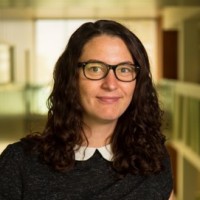
Amy has just begun her ECR fellowship funded by The Hospital Research Foundation where she is developing novel antiseptic formulations for the treatment of vaginal and perineal tears caused by childbirth. She uses state-of-the-art imaging techniques to study the effects of nanomaterials on biological tissue. She will be discussing how her research on the skin is informing the development of novel formulations for the vaginal mucosa.
Date: Monday 15 March, 11:30-12:30
Location: Bradley Building, HB8-18 and Zoom -
1 March 2021 - Dr Santosh Adiraju
'Investigating Cytochrome P450 mediated drug metabolism in patients on extracorporeal life support.'
1
MAR 21Santosh completed his PhD in 2019 from the University of Queensland. He started working as an early career researcher with A/Prof Cobus Gerber at University of South Australia Clinical & Health Sciences.
Date: Monday 1 March, 11:30-12:30
Location: Bradley Building, HB8-18 and Zoom -
15 February 2021 - Dr Andrea Stringer
'Vitamin D: bringing sunshine to the crypts of the intestine.'
15
FEB 21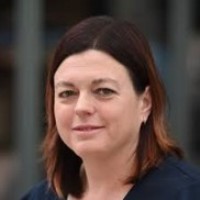
Dr Andrea Stringer is Theme Leader for Gut Health and Deputy Director of Health and Biomedical Innovation in UniSA Clinical and Health Sciences.
She leads research on gut function and gut microbiome, developing strategies for preventing or treating oral and gastrointestinal damage following cancer treatments (mucositis) to reduce the burden of cancer. Her work involves identifying the mechanisms underpinning the damage that occurs following cancer treatments, with studies investigating the microbiome, inflammatory cytokines, the mucus barrier, and the enteric nervous system.
She has been involved in multiple pre-clinical investigations evaluating mucositis treatments and their effectiveness in treating cancer treatment-induced mucositis. Her current work focusses on the role of vitamin D in the intestine, specifically maintaining the microbiome, an anti-inflammatory environment and barrier function.
Date: Monday 15 February, 11:30-12:30
Location: Bradley Building, HB8-18 and Zoom
-
22 November 2021 - Professor Adrian Esterman
-
Symposia
HBI Symposia
HBI is committed to supporting all researchers, but particularly our emerging leaders, in opportunities to share their work. Thus, we regularly hold symposia that give HDRs, ECRs and MCRs the opportunity to showcase their work and to win prizes as voted by the audience. These symposia are held face to face and virtually to promote participation from a broad base.
-
24 September 2021 - Emerging Researchers Symposium
Emerging Researchers Symposium
24
SEPT 21Location: Bradley Building, HB8-18 and Zoom
Congratulations to all the presenters who took part in the Emerging Researcher Symposium hosted by Health and Biomedical Innovation (HBI) as a part of CHS Research Week.
Thanks to the organisers: Dr Andrea Stringer, Ashley Meakin and Jess Roach.
Below are the winners in each category throughout the day.
Early HDR
Best - Tien Bui; People’s Choice - Catherine Dimasi
Late HDR
Best - Kay Myo Min; People’s Choice - Ruba Almasri
ECR
Best - Dr Renly Lim; People’s Choice - Dr Hayley SchultzClick on the person below to view their presentation
*NOTE: Only UniSA Staff can access videos.Time
Speaker
Title
1230
Opening - Professor Janna Morrison
Physiology across the lifespan Chaired by A/Prof Paul Anderson
1240
Redox ratio in the left ventricle of the growth restricted fetus is positively correlated to cardiac output
1250
Adverse events associated with umbilical catheters: a systematic review and meta-analysis
1300
Mass spectrometry tissue imaging identifies complex/hybrid-type N-glycans as putative novel cartilage degradation markers for human knee osteoarthritis.
1310
Synthetic oxytocin and mother-infant bonding
1320
Dr Nicole Wittwer
Antibody drug conjugate induces cell death and inti-tumour immunity in mouse models of cancer
1330
Hepatic cytochrome P450 function is altered in a preclinical guinea pig model of NAFLD
BREAK
Bug, bites and the Big C Chaired by Dr Ash Meakin and A/Prof Rietie Venter
1400
Photoactive nano-fats a new weapon against superbugs!
1410
Antibacterial coumarin amphiphiles targeting bacterial membranes
1420
Kay Myo Min
Desmoglein-2 promotes an aggressive phenotype of pancreatic cancer: implications for therapeutic intervention
1430
Citizen science and public health: integrating this partnership into mosquito surveillance programs
People, Places and Passage Chaired by Dr Amy Holmes and A/Prof Michael Wiese
1500
Community mental health consumers' psychotropic medication knowledge and experience with their healthcare providers
1510
Effectiveness of patient activation interventions compared with usual care on health-related behavioural outcomes in adults with chronic kidney disease: a systematic review and meta-analysis
1520
The role of silica microporosity on abiraterone acetate solubilization
1530
Can’t spell “medicine” without “me”: Development of a patient-driven digital tool to report medicine-related side effects
1540
Administration of buprenorphine long-acting injections by community pharmacists: Addressing access barriers to treatment for opioid addiction.
1550
The impact of caffeine on the renal clearance of calcium
Closing - Dr Andrea Stringer & Prof Janna Morrison
1600-1700
NETWORKING
-
16 April 2021 - HBI Trainee Symposium
Trainee Symposium Program
16
APRIL 21Time
Speaker
Title
1:00-
1:10pm
Introduction - Prof Janna Morrison and Dr Andrea Stringer
1:10-
1:30pm
A/Prof Michael Wiese
Technical speak: LCMS/MS
1:30-
1:45pm
Ms Catherine Dimasi
Redox ratio in the left ventricle of the growth restricted fetus is linked to cardiac output
1:45-
2:05pm
Dr Ashley Meakin
Hepatic cytochrome P450 function is altered in a preclinical guinea pig model of NAFLD
2:05-
2:15pm
Break
2:15-
2:35pm
Dr Sheree Bailey
Technical speak: Flow cytometry
2:35-
2:55pm
A/Prof Paul Anderson
Technical speak: microCT and bioluminescence
2:55-
3:10pm
Ms Yea Rin Olivia Lee
Mass spectrometry imaging identifies complex/hybrid-type N-glycans as putative novel cartilage degradation markers for human knee osteoarthritis
3:10pm
Close and networking
Date: Monday 16 April, 13:00-15:10
Location: Bradley Building, HB8-18 and Zoom
-
24 September 2021 - Emerging Researchers Symposium




